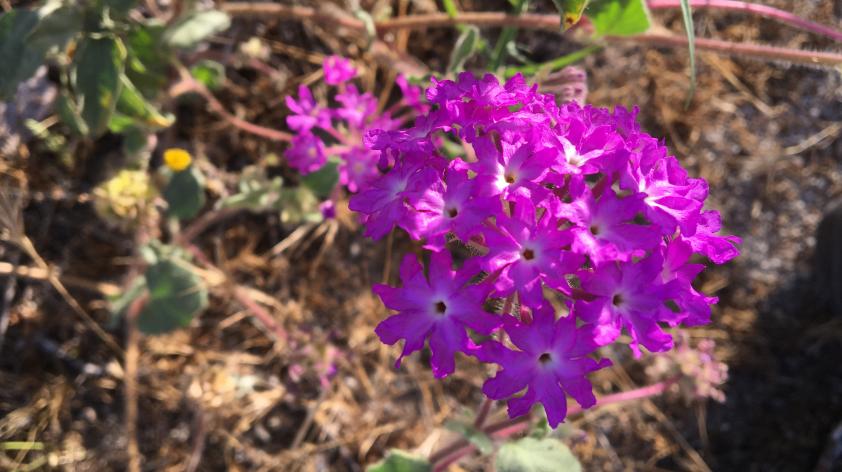
Goldilocks: The Kangaroo Rat
Each season when we drive out to our field site for the first time, we never know exactly what to expect. At this particular San Jacinto River site we have a fairly long drive on an unpaved dirt road. We make sure to take a four wheel drive vehicle. (And check that it is actually in four wheel drive. The ones where you have to get out and turn something manually to lock it in high gear are tricky). We got through some sandy patches and over a few river rocks when we ran out of road. In its place was a steep drop off and a ton of water.
Turns out, before we ran out of road, we managed to make it most of the way to our field site and all we needed to do was cross the river on foot and carry our supplies the last few hundred meters.
This brand new stretch of river was surprising for us, but essential for the long term survival of our study species, the federally endangered San Bernardino kangaroo rat (SBKR). This species has evolved to live in alluvial flood plains, meaning areas where sand and gravel have been deposited by flowing water.
However, because we live in a Mediterranean climate (characterized by long dry summers and periodic flashy stream flows), most of the year alluvial flood plains look like dry river beds. Natural dynamic fluvial processes, which include flooding and scouring or scraping of established vegetation away from the soil create natural periodic disturbances. This is important and helps to keep the alluvial sage scrub (SBKR habitat) alive and healthy. Healthy in this case specifically means not filled up with invasive grasses and not only large dense mature shrubs.
However, habitat can be too bare for SBKR as well.
They can’t survive in only the open channel part of the river, even when the water dries up. This is because the sand in this area is too soft for them to make permanent burrows where they sleep during the day, store food and have offspring.
In addition, the yearly risk of flooding is too great right in the main channel of the river. Good SBKR habitat needs a combination of sparse shrubs and bare ground and it is usually found in the areas surrounding the main channel, perhaps the elevated banks, which benefit from periodic flooding.
SBKR are like Goldilocks in the story of the three bears: the habitat must not be too bare or too thick with plants, but just right with a combination of both.
The hydrological influences on the habitat are essential and can be disrupted by human influences such as the building of dams and levees, groundwater extraction, and flow diversion. So for the sake of SBKR and all the other endemic species that evolved to live in this rich and diverse alluvial corridor, we must protect existing natural rivers and their processes and ensure careful planning of altered habitats.













